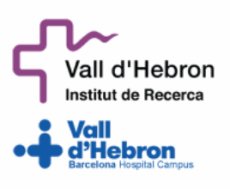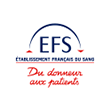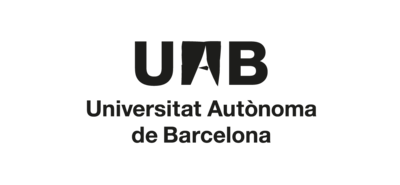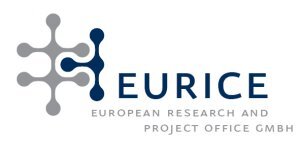After exiting the bone marrow, reticulocytes mature to form red blood cells (RBCs) which are highly adapted cells Red blood cells (RBCs) travel through our circulation during their entire lifetime of in average 120 days. This means they are in constant move and adapt to their surrounding by shape changes, e.g., when in high speed flow or with even more severe volume adaptations, when they squeeze through small capillaries or the slits of the spleen having less than half their own size...
Academic research centers:
-

Vall d'Hebron University Hospital Foundation - Research Institute (VHIR)
Vall d'Hebron University Hospital Foundation - Research Institute (VHIR) is a multidisciplinary biomedical research public centre that promotes and develops innovative biomedical research. It was created in 1994 to support the research of University Hospital Vall d'Hebron (HUVH), the leading hospital complex in Catalonia, and one of the largest in Spain with more than 1300 beds and 7000 employees. VHIR aims at undertaking high quality and competitive research and teaching at the international level in the field of health and life sciences. Involved in the areas of basic, clinical, epidemiological, economic and healthcare. VHIR is devoted to transfer the knowledge allowing a better diagnosis, treatment and prevention of the health problems of our society. VHIR has 58 biomedicine independent research groups. It also counts on experimented team in charge of supporting all technical, financial, management issues as well as reporting activities related to the research projects.
Researchers have access to the VHIR's Core Facilities (VHIR-CF) that provide specific cutting-edge solutions for every need during the process of biomedical research. Specifically, this proposal will benefit from: Lab Animal Service, High Technology Unit, Statistics and Bioinformatics Unit, Clinical Trials Pharmacy, Clinical Research Support Unit, Biobank, and the Academic Research Organization. VHIR is also a member of EATRIS and ECRIN that allow easy access to their European infrastructure. In addition, VHIR has an experimented team in of supporting all technical, financial, management issues as well as reporting activities related to the research projects.
HUVH is one of the largest Hospitals, not only in Catalonia, but also in Spain, and represents by far the Spanish Hospital with the largest population on rare anaemias. Especially for the interest of our investigations, HUVH is the Catalan reference centre for patients affected by rare anaemia disorders, and the reference centre for follow-up of patients affected by sickle cell disease diagnosed through neonatal screening in Catalonia.
-
Saarland University counts 17.000 students of whom 7 % are foreign students. Saarland University has 6 faculties and provides a broad spectrum of disciplines and a strong focus on life sciences and computer science aspects.
The concept of investigations is an interdisciplinary approach to explore cellular signaling under physiological and pathophysiological situations. The research contains elements of basic research and applied science, comprising e.g. pharmacological safety screens and exploration of diagnostic concepts. -

SB - Sanquin Blood Supply
Group SB1 - Robin van Bruggen
Group SB2 - Marieke von Lindern, Emile van den AkkerSanquin Research (SR) is actively involved in the training of bachelor-, master- and PhD-students. SR employs 17 full professors and multiple associate professors. Currently, approximately 75 PhD students in all stages of their study perform their studies at SR. They enroll in the (post)graduate school of the Academic Medical Centre (AMC) of the University of Amsterdam (UvA). The research division is well equipped and performs basic and translational research in the field of transfusion medicine, haematology and immunology.
-
The University of Bristol is among the UK's top research universities, consistently being rated as one of the best UK Biochemistry Departments by the Higher Education Funding Council for England (HEFCE). Substantial investment has meant that the majority of research and teaching laboratories in the School have been refurbished in recent years. In particular, a significant investment has been made in the Wolfson Bioimaging Facility which contains state of the art microscope facilities and also in the Proteomics facility located in the School of Biochemistry. Research in the school is supported by approximately £8million of externally and competitively awarded income per year. There are 20 Professorial, 17 lecturer Senior lecturers/readers and 6 externally funded fellows and 75 research staff (plus 12 research technicians). The School currently has approximately 77 PhD students including 13 BBSRC, 14 Wellcome Trust and 4 MRC. The School hosts the NIHR Blood and Transplant Unit which is composed of researchers from the School of Biochemistry and Bristol Institute of Transfusion Sciences (BITS) located in NHSBT Filton. NHSBT Filton is also the site of the International Blood Group Reference Laboratory IBGRL, NHSBT Filton World Class Blood processing facility and the Stem Cell bank. BITS also runs an MSc course in Transfusion Sciences.
-
The Centre National de la Recherche Scientifique is a government-funded research organisation under the responsibility of the French Ministry of research. With 33000 persons, 1144 research units spread throughout the country, CNRS carries out research in all scientific fields of knowledge and conducts interdisciplinary programmes, one major objective being to improve knowledge, promote interdisciplinarity, ensure economic and technological development or solve complex societal needs. CNRS is the French largest research organization, and the largest European one in terms of publications. CNRS has been awarded in 2017 HR Excellence in Research (HRS4R).
The Station Biologique of Roscoff belongs to Centre National de la recherche Scientifique as well as Sorbonne University Curie, which is the first University in France. The Institute comprise 30 people, with dedicated mission for research and teaching with a high degree of interdisciplinary. The Roscoff Station has a long tradition of hosting scientists and students and now belongs to the ESFRI project EMBRC offering then all core facilities for modern science. Moreover, since National center for Conference of the CNRS-1 is based at Roscoff, the institute is a hotspot for scientific diffusion.
The LIPHY (Laboratoire Interdisciplinaire de Physique) is associated to CNRS and University of Grenoble, and counts 70 permanent scientists with high level of interdisciplinarity (Physics/mechanics, applied math. and biology). The LIPHY is implied in many teaching and education programmes at the local and international levels, and is in close interaction with the hospital and the advanced bioscience lab in Grenoble. This offers a privileged environment for carrier developments.
-
The Établissement Français du Sang (French Blood Establishment - EFS) is a public institution established in 2000 under the responsibility of the French Ministry of Health; it is the unique public blood transfusion service in France. EFS manages the collection of labile blood products (red blood cells, platelets, therapeutic plasma) as well as their preparation, screening and distribution/issuance throughout mainland France and its overseas departments. EFS is involved in numerous activities linked to its medical expertise and has made research and innovation one of its priorities with 16 research units and several platforms for the production of advanced therapy medicinal products. The research topics addressed by these teams are various and involve interdisciplinary exchanges and an extensive range of expertise: public health, infectious diseases and microbiology, diagnosis, immunology, regenerative medicine, immunotherapy, sociology.
The EFS partner is the "Biology of human blood groups" team within the UMR 7268 "ADES" unit that is located at Aix-Marseille Université in Marseille. Work conducted in this team focuses on red blood cell biology and erythroid differentiation in normal and pathological conditions. The team has a privileged access to blood samples from healthy donors, through the activity of EFS, and from patients with haematological diseases thanks to an extended network of physicians in the field of red cell and haematological disorders.
-
The University of Zurich is one of the top universities in Europe with 26,472 students studying at 7 faculties and an annual budget of 1.377 billion Swiss francs. UZH has a very strong research background in natural and medical sciences acknowledged with two (12 in total) Nobel prizes in Physiology and Medicine. The laboratory of one of them, Prof. Walter Rudolf Hess, has given rise to the Hypoxic lab of Prof Max Gassmann and the Red Blood Cell Research Group within it headed by Prof. Anna Bogdanova. This group of 8 researchers and PhD students is actively working to characterise the function of red blood cells of humans and the impact of stress and diseases associated with anemic state in red blood cell properties and turnover. The group is associated with clinical hematologists, physicists, and engineers to carry on ambitious multidisciplinary projects funded by national and international foundations.
-
With over 1,000 beds & more than 11,000 employees UMCU is one of the largest academic centers in the Netherlands. Patient care and biomedical research are closely linked, which creates and environment where scientific advancements quickly move from bench to bedside: advancements that improve patients' lives and that matter internationally.
The research within EVIDENCE will be carried out at the Laboratory of Red Blood Cell Research, lead by Dr Richard van Wijk.
-
The Universitat Autònoma de Barcelona (UAB) is one of the major public universities of Spain. It offers 88 bachelor's degrees, 133 Master's degrees, 8 Erasmus Mundus Master's degrees. The University has over 41,000 students (more than 6,000 foreign students), almost 4,600 researchers and teaching staff. In the 2018 edition of the Times Higher Education World University Rankings, the UAB is the second Spanish university, 147th in the world ranking. In Europe, the UAB ranks among the Top 100 (68th position). The UAB is recognized internationally for its quality and innovation in research. Its main areas of investigation include Biotechnology and Biomedicine (including clinical research carried out at associate hospitals), Animal Health, Food Technology and Safety, Environmental Sciences etc.
-
The Claude Bernard Lyon 1 University proposes a wide offer of formations preparing to the professional life within 13 departments. Lyon 1 awards 350 PhD a year at the outcome of their research studies, conducted in the university's laboratories, in cooperation with partner industries or other educational establishments.
-
IBEC is a research institute covering most bioengineering fields, from basic research to medical applications, aiming to act as an international reference in this field. IBEC was established in 2005 by the Government of Catalonia, the University of Barcelona (UB) and BarcelonaTech (UPC) and is located at the Barcelona Science Park (PCB). IBEC hosts around 200 researchers and technicians, which are part of its own staff or are associated to the UB and UPC. Within IBEC, the Nanobioengineering group led by Josep Samitier is a multidisciplinary research group focusing its research activities on the development and application of nanotechnology to the development of new biomedical systems and devices, mainly for diagnostic purposes.
Companies:
-

Nanion - Nanion technologies GmbH
Nanion is an SME focussed on the automation and upscaling of electrophysiological recording techniques, with our core competence being high-throughput patch clamp electrophysiology. We develop medium to high throughput recording devices and their application for a broad range of research areas, drug discovery and safety screening.
-

Cysmic GmbH
Cysmic GmbH is specialized in automated high-throughput cell detection and cell classification based on imaging methods. Involving artificial intelligence, we are able to detect smallest shape features of cells indicating anemia or blood cell related diseases such as malaria.
-
RR Mechatronics is a medical device company employing some 90 people of which 34 work in R&D. Its main products are:
- The Starrsed line of fully automated Westergren ESR instruments for medium to the largest fully automated clinical laboratories.
- In-line, reagent preparation from concentrate for the leading flow-cytometer manufacturers.
- The Lorrca OsmoScan and Oxygenscan, an Ektacytometer instrument that is the gold standard in research, diagnosis and severity assessment of hereditary RBC membrane disorders and Sickle cell anemia.
All of our three lines-of-business were developed in continuing close international cooperation with either academia or large hematology instrument corporations.
RR Mechatronics has participated many nationally subsidized projects and has recently acquired a EUROSTARS funded EU project for the further development of an instrument that measures the individual's susceptibility of a sickle cell crisis.
RR Mechatronics recently acquired for the third time in a row the FD-Gazelle award which is a national award for fast growing SME companies. -
Founded in Lyon (France) in 2004, Erytech Pharma is a clinical-stage biopharmaceutical company developing innovative therapies for rare forms of cancer and orphan diseases. Leveraging its proprietary ERYCAPS platform, which uses a novel technology to encapsulate therapeutic drug substances inside red blood cells, Erytech has developed a pipeline of product candidates targeting markets with high unmet medical needs. Erytech's initial focus is on the treatment of cancers, by depriving tumors of nutrients necessary for their survival.
-
Lyfjos GmbH is a company that specializes in project management and the administration of intellectual property. It does so in collaboration with academic institutions to support projects in drug discovery and IP production. It is our aim to give scientists a comprehensive view of the tasks required to turn research into a product. We propagate an early understanding of what is required for an idea to mature into a product, as this further enables practical and goal focused science.
-
Founded in 2000, Eurice provides comprehensive project and innovation management services for international collaborative research and innovation projects. Within H2020, Eurice has been involved in the coordination of >30 collaborative projects - among them 6 MSCA Innovative Training Networks. According to the most recent H2020 monitoring report, Eurice belongs to the Top 3 of SMEs in Europe regarding the number of signed H2020 agreements. Eurice is among Europe's largest project management offices, with an interdisciplinary team of over 40 staff members. Providing >50 training sessions in the field of H2020/year, Eurice is a highly experienced and renowned training provider within the EU. In 2018 alone, we welcomed over 4,000 researchers, SMEs, reviewers and EC project monitoring staff to our extensive innovation management training programme.













